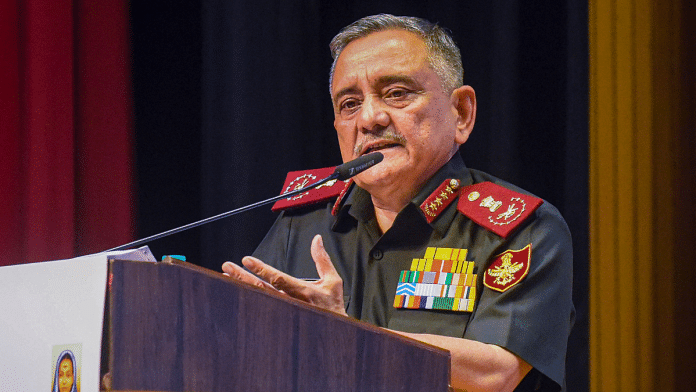“Adaptability is a key marker of a professional force. One must understand what went wrong, correct the mistake, and go back into action. You cannot sit down in fear,” he added.
On reports of India losing combat aircraft during recent operations, Gen Chauhan reiterated: “Losses in war are not important, what matters is that the objective was achieved.”
“You cannot sit back in fear but must maintain high operational tempos. Losses are not important; the outcome is,” he added.
Back on Saturday, the CDS had to when he had asserted that the initial situation was corrected promptly and combat operations resumed within 48 hours.
“What is important is not that the jets were downed, but why they were downed,” he had said in Singapore. “The good part is that we understood the tactical mistake, remedied it, and re-engaged two days later with long-range targeting. That is what matters.”
In a separate interview with , Gen Chauhan had said both India and Pakistan had acted rationally during the recent escalation. “Why should we assume that in the nuclear domain, there will be irrationality on someone else’s part?”
Referring to Pakistan’s conduct during Operation Bunyan-um-Marsoos, he said Islamabad reached out to the Director General of Military Operations (DGMO) after misjudging the nature and consequences of its own strikes.
“They hit multiple fronts without fully understanding the targets. When they realised the cost of escalation, they called for dialogue, knowing further action would lead to greater losses,” he said in Pune.
“On the 10th of May, at about 1 am, their (Pakistan) aim was to get India to its knees in 48 hours. Multiple attacks were launched and in some manner, they have escalated this conflict, which we had actually hit only terror targets… Operations which they thought would continue for 48 hours, folded up in about 8 hours and then they picked up the telephone and said they wanted to talk,” the CDS added.
Recalling that DGMO-level exchange between two sides, he said, “the Indian armed forces demonstrated rationality. On the 7th, we conveyed to the Pakistani DGMO that only terror targets were hit with no collateral damage or no military infrastructure being involved.”
The CDS further emphasised that warfare today is a deeply political exercise.
“A state uses diplomatic, informational, military and economic tools to achieve its political objectives. You’ve seen this recent war, it was fought to secure political outcomes. War and politics are running in parallel,” he said. “War is a continuation of policy and it is also a rational decision.”
Touching upon Operation Sindoor, Gen Chauhan stated that Pakistan can no longer use terrorism or nuclear threats to hold India hostage. “State-sponsored terrorism from Pakistan has to stop. India is not going to live under the shadow of terror and nuclear blackmail,” he said.
“Terrorism is not a rational act, it defies rationality. But when a state sponsors terrorism, it becomes a reasoned act, calculated for political ends,” he said, drawing a distinction between terrorism and warfare.
Operation Sindoor, he asserted, had redrawn the lines of military engagement. “We have drawn a new line of military operation. Terrorism has now been linked to critical resources like water. Pakistan’s strategy to bleed India by a thousand cuts will no longer go unanswered,” he said in tune with PM Modi’s message that “blood and water cannot flow together.”
Referring to the Pahalgam terror attack in which 26 civilians were killed, Gen Chauhan said: “They were killed in the name of religion, which is unacceptable in today’s modern world. This act created revulsion across society and reminded us of the repeated terror attacks India has endured.”
He further contextualised the terror attack in a broader historical arc. “In 1965, Zulfikar Ali Bhutto spoke of a thousand-year war against India. Just two days before the Pahalgam attack, Pakistan Army Chief Asim Munir made incendiary remarks against Hindus,” the CDS said.
He added that while western nations may have faced one or two major terror attacks, India has suffered nearly 20,000 casualties due to terrorism.
Discussing Operation Sindoor, he described it as India’s first instance of non-contact warfare, apart from actions along the Line of Control. “It combined kinetic and non-kinetic means, was non-linear in nature, and featured simultaneous strikes at the LoC (Line of Control) and at Pakistan’s Nur Khan Airbase.”
He also said that the operation was highly networked, involving integrated air defence systems linked via IACCS (Integrated Air Command and Control System) and Akashteer, and supported by fused counter-UAS technologies. It was also a multi-domain operation, spanning land, air, cyber, space and the electromagnetic spectrum, he added.
On the future of warfare, Gen Chauhan said that contact warfare has expanded dramatically, with Indian weapon systems capable of covering the entire length and breadth of Pakistan for highly precise strikes
Operation Sindoor was a “historic demonstration of air power,” he said. “We penetrated a prepared adversary’s air defence network with impunity, showcasing India’s superior airpower.”
(Edited by Tony Rai)








